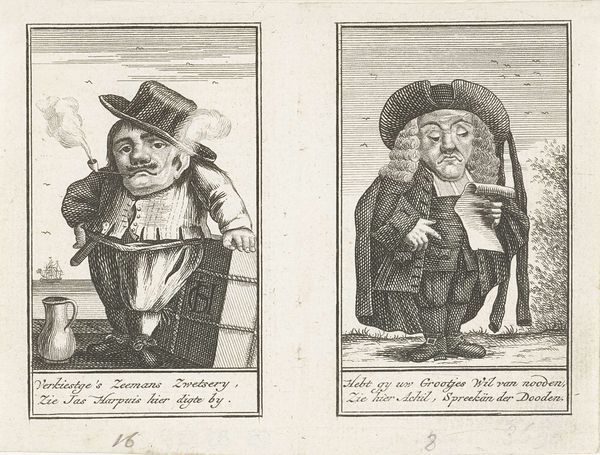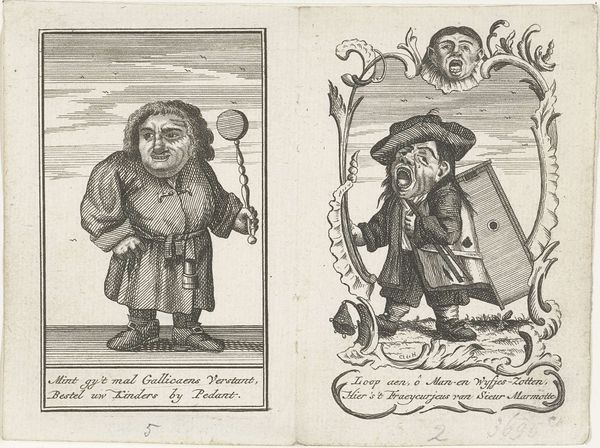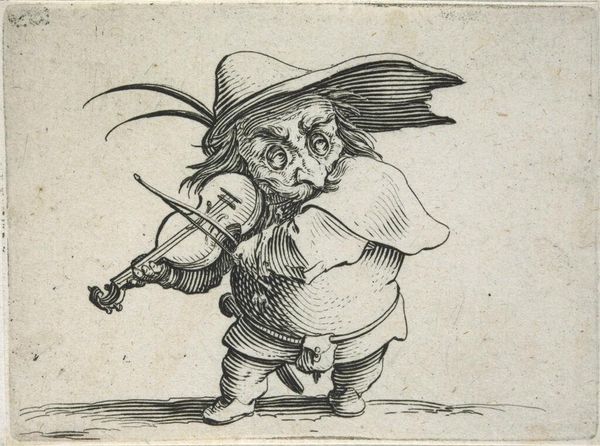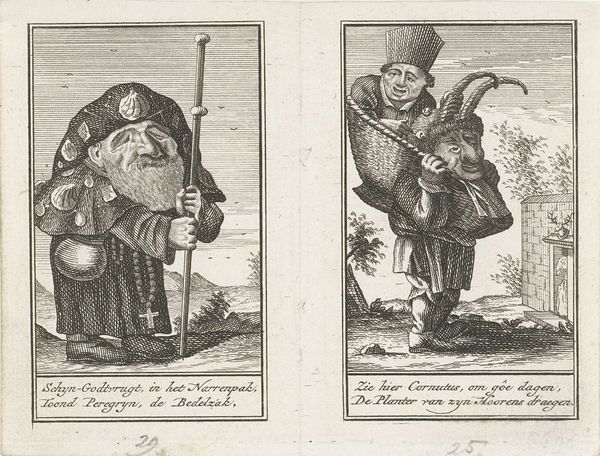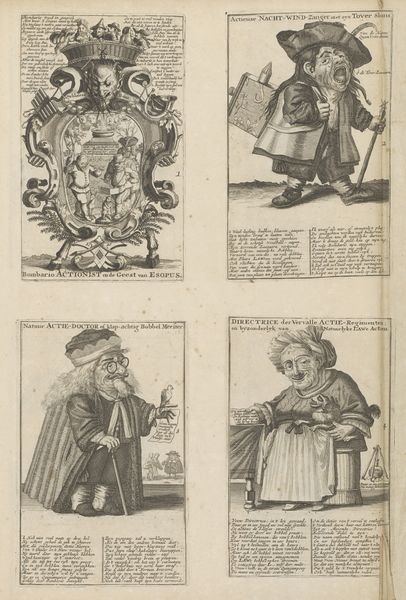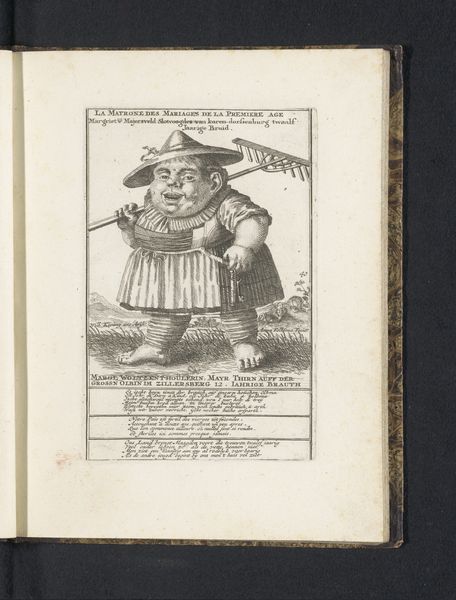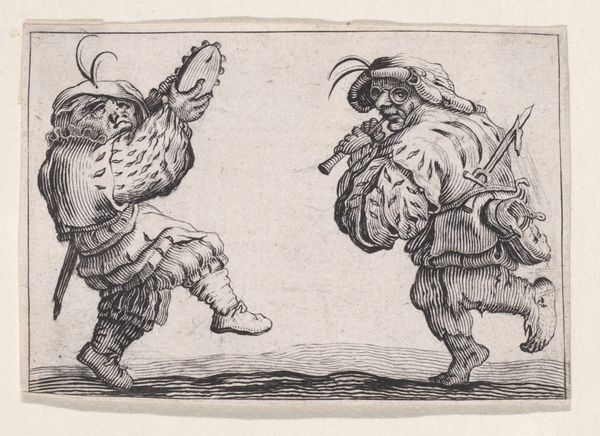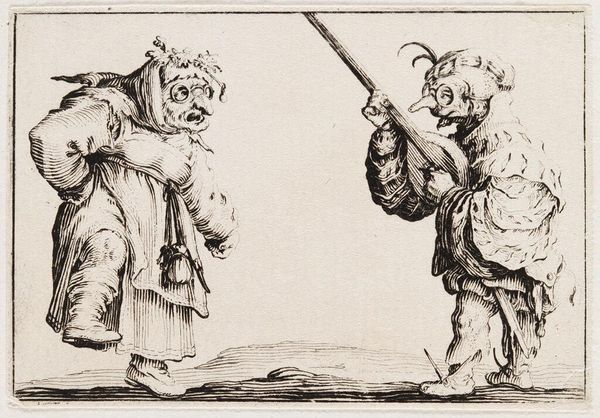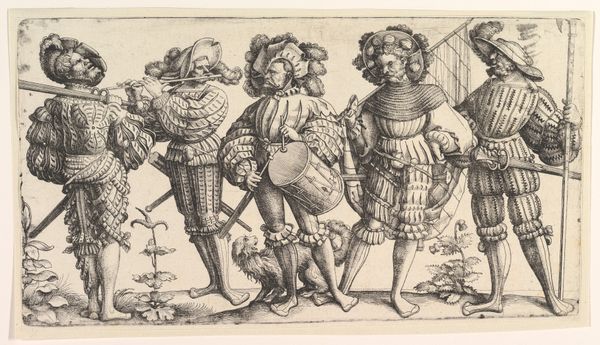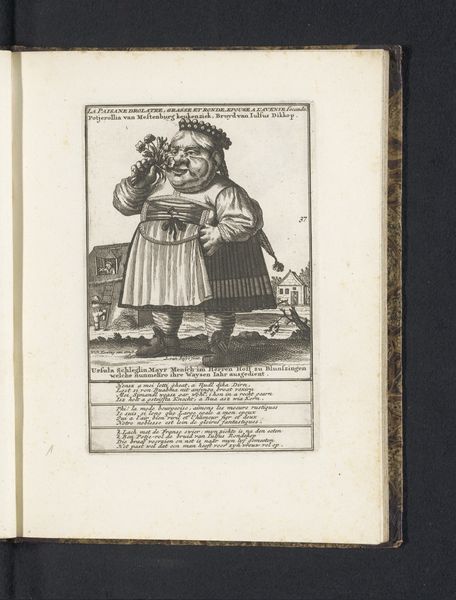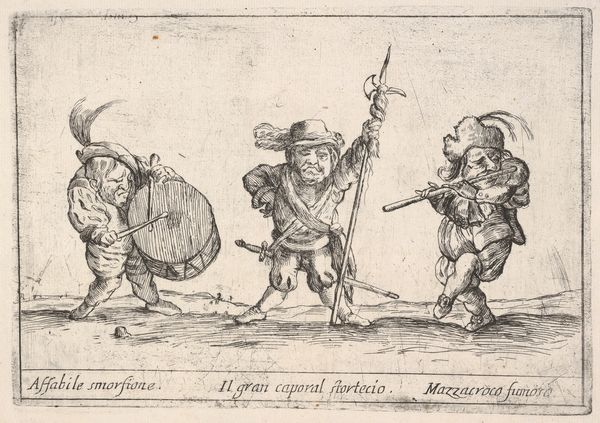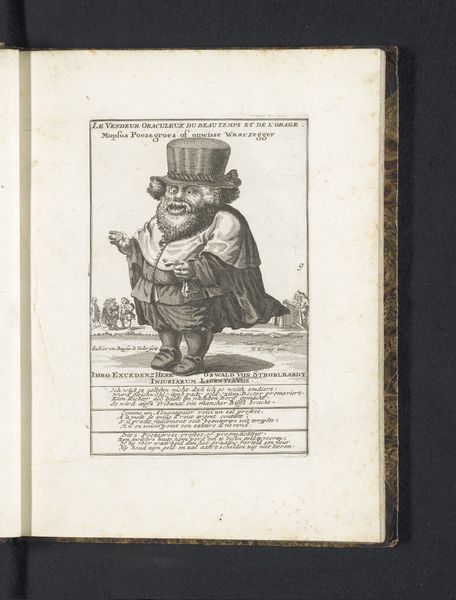
Dimensions: height 95 mm, width 125 mm
Copyright: Rijks Museum: Open Domain
Editor: This engraving from around the 1770s is titled "Two Pages with Dwarves". The figures, rendered in a precise, linear style, almost feel like caricatures, yet they evoke a sense of folk-art. The texture is pretty intricate, with very fine lines. How should we interpret such unusual subjects in this old engraving style? Curator: What strikes me is the potential political dimension embedded in what you call "caricatures". During the Baroque and late Baroque, the grotesque often served to critique social hierarchies and question authority. Given its existence in a print, how widely distributed do you think the "critique" went? Editor: Good question, that wasn't even on my radar. I was so focused on the... well, on how weird the characters looked! Knowing it was distributed helps reframe things. Was the public accustomed to seeing critiques presented so boldly? Curator: Boldly is interesting. Consider the power dynamics: Did these images empower the common viewer, by mocking those in power or simply offer fleeting amusement without affecting real social change? Also, why use dwarfish figures? Does it mock those already marginalized? It is also titled, in translation, "King of Fools," does that clarify its target of critique or complicate it? Editor: I never considered whether images like these were potentially harmful too. I see that viewing art in its socio-historical context is complicated. I came here looking for answers and am leaving with even more questions. Curator: That's the best kind of journey! Hopefully it opens your eyes to how much more than the simply aesthetic the world of visual culture is.
Comments
No comments
Be the first to comment and join the conversation on the ultimate creative platform.
